Document 12050557
advertisement
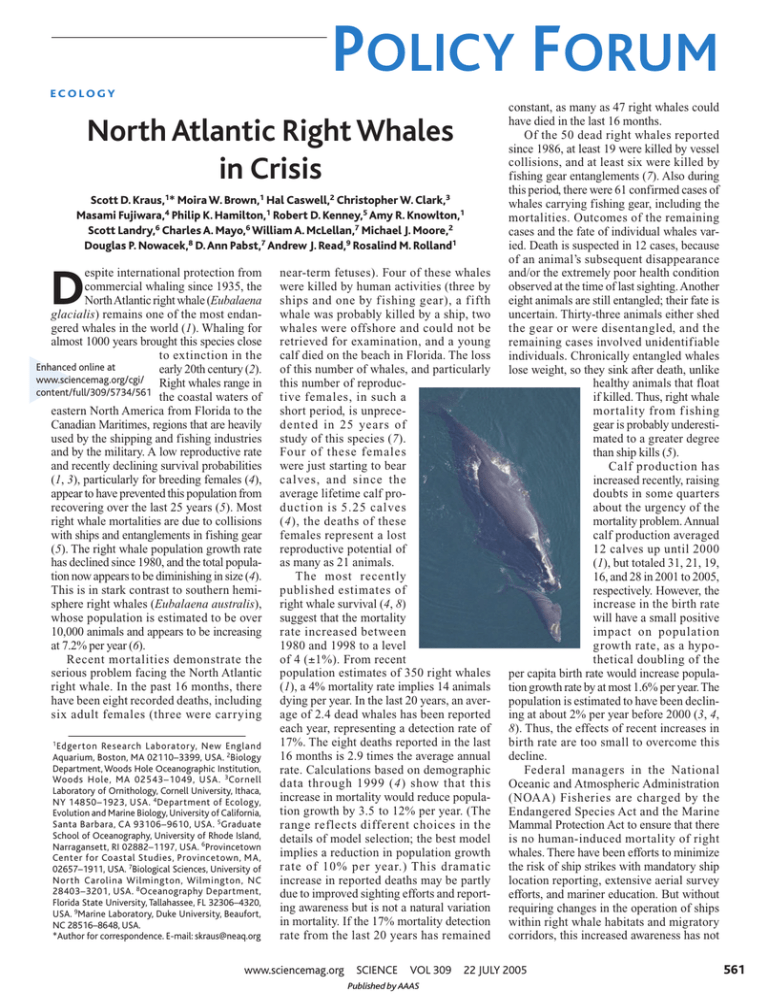
POLICY FORUM ECOLOGY North Atlantic Right Whales in Crisis Scott D. Kraus,1* Moira W. Brown,1 Hal Caswell,2 Christopher W. Clark,3 Masami Fujiwara,4 Philip K. Hamilton,1 Robert D. Kenney,5 Amy R. Knowlton,1 Scott Landry,6 Charles A. Mayo,6 William A. McLellan,7 Michael J. Moore,2 Douglas P. Nowacek,8 D. Ann Pabst,7 Andrew J. Read,9 Rosalind M. Rolland1 espite international protection from commercial whaling since 1935, the North Atlantic right whale (Eubalaena glacialis) remains one of the most endangered whales in the world (1). Whaling for almost 1000 years brought this species close to extinction in the Enhanced online at early 20th century (2). www.sciencemag.org/cgi/ Right whales range in content/full/309/5734/561 the coastal waters of eastern North America from Florida to the Canadian Maritimes, regions that are heavily used by the shipping and fishing industries and by the military. A low reproductive rate and recently declining survival probabilities (1, 3), particularly for breeding females (4), appear to have prevented this population from recovering over the last 25 years (5). Most right whale mortalities are due to collisions with ships and entanglements in fishing gear (5). The right whale population growth rate has declined since 1980, and the total population now appears to be diminishing in size (4). This is in stark contrast to southern hemisphere right whales (Eubalaena australis), whose population is estimated to be over 10,000 animals and appears to be increasing at 7.2% per year (6). Recent mortalities demonstrate the serious problem facing the North Atlantic right whale. In the past 16 months, there have been eight recorded deaths, including six adult females (three were carrying D 1 Edgerton Research Laboratory, New England Aquarium, Boston, MA 02110–3399, USA. 2Biology Department, Woods Hole Oceanographic Institution, Woods Hole, MA 02543–1049, USA. 3 Cornell Laboratory of Ornithology, Cornell University, Ithaca, NY 14850–1923, USA. 4 Department of Ecology, Evolution and Marine Biology, University of California, Santa Barbara, CA 93106–9610, USA. 5 Graduate School of Oceanography, University of Rhode Island, Narragansett, RI 02882–1197, USA. 6Provincetown Center for Coastal Studies, Provincetown, MA, 02657–1911, USA. 7Biological Sciences, University of North Carolina Wilmington, Wilmington, NC 28403–3201, USA. 8 Oceanography Department, Florida State University, Tallahassee, FL 32306–4320, USA. 9Marine Laboratory, Duke University, Beaufort, NC 28516–8648, USA. *Author for correspondence. E-mail: skraus@neaq.org near-term fetuses). Four of these whales were killed by human activities (three by ships and one by f ishing gear), a f ifth whale was probably killed by a ship, two whales were offshore and could not be retrieved for examination, and a young calf died on the beach in Florida. The loss of this number of whales, and particularly this number of reproductive females, in such a short period, is unprecedented in 25 years of study of this species (7). Four of these females were just starting to bear calves, and since the average lifetime calf production is 5.25 calves (4), the deaths of these females represent a lost reproductive potential of as many as 21 animals. The most recently published estimates of right whale survival (4, 8) suggest that the mortality rate increased between 1980 and 1998 to a level of 4 (±1%). From recent population estimates of 350 right whales (1), a 4% mortality rate implies 14 animals dying per year. In the last 20 years, an average of 2.4 dead whales has been reported each year, representing a detection rate of 17%. The eight deaths reported in the last 16 months is 2.9 times the average annual rate. Calculations based on demographic data through 1999 (4) show that this increase in mortality would reduce population growth by 3.5 to 12% per year. (The range reflects different choices in the details of model selection; the best model implies a reduction in population growth rate of 10% per year.) This dramatic increase in reported deaths may be partly due to improved sighting efforts and reporting awareness but is not a natural variation in mortality. If the 17% mortality detection rate from the last 20 years has remained www.sciencemag.org SCIENCE VOL 309 Published by AAAS constant, as many as 47 right whales could have died in the last 16 months. Of the 50 dead right whales reported since 1986, at least 19 were killed by vessel collisions, and at least six were killed by fishing gear entanglements (7). Also during this period, there were 61 confirmed cases of whales carrying fishing gear, including the mortalities. Outcomes of the remaining cases and the fate of individual whales varied. Death is suspected in 12 cases, because of an animal’s subsequent disappearance and/or the extremely poor health condition observed at the time of last sighting. Another eight animals are still entangled; their fate is uncertain. Thirty-three animals either shed the gear or were disentangled, and the remaining cases involved unidentifiable individuals. Chronically entangled whales lose weight, so they sink after death, unlike healthy animals that float if killed. Thus, right whale mortality from f ishing gear is probably underestimated to a greater degree than ship kills (5). Calf production has increased recently, raising doubts in some quarters about the urgency of the mortality problem. Annual calf production averaged 12 calves up until 2000 (1), but totaled 31, 21, 19, 16, and 28 in 2001 to 2005, respectively. However, the increase in the birth rate will have a small positive impact on population growth rate, as a hypothetical doubling of the per capita birth rate would increase population growth rate by at most 1.6% per year. The population is estimated to have been declining at about 2% per year before 2000 (3, 4, 8). Thus, the effects of recent increases in birth rate are too small to overcome this decline. Federal managers in the National Oceanic and Atmospheric Administration (NOAA) Fisheries are charged by the Endangered Species Act and the Marine Mammal Protection Act to ensure that there is no human-induced mortality of right whales. There have been efforts to minimize the risk of ship strikes with mandatory ship location reporting, extensive aerial survey efforts, and mariner education. But without requiring changes in the operation of ships within right whale habitats and migratory corridors, this increased awareness has not 22 JULY 2005 561 POLICY FORUM led to a reduction in ship strike mortalities. The risk of fishing gear entanglement has been addressed by selective area closures and gear modifications (9). These closures do not adequately encompass the seasonal movements of right whales, and gear modifications implemented thus far have not reduced entanglement rates. Eight dead right whales in the past 16 months provide clear evidence that management efforts have been woefully inadequate, and much stronger measures are needed to reverse the right whale’s decline. Accordingly, we urge immediate changes to the management of right whales, focusing on reducing human-induced mortality. Some of the following recommendations will also benefit other marine species that face similar threats, such as the endangered leatherback sea turtle (Dermochelys coriacea) (10). First, emergency measures should be implemented to reduce speeds and reroute commercial and military ships as recommended in the NOAA Fisheries Advanced Notice of Proposed Rule-Making (11). Second, the amount of fixed fishing gear in the water column should be eliminated or minimized. There are many steps that could be taken to do this, including (i) mandating changes in the pot-fishing industry (lobster, crab, hagfish, etc.) that will reduce gear in the water; (ii) requiring use of alternative rope types (e.g., sinking ground lines) to minimize entanglement deaths; (iii) developing and implementing fishing methods that do not use vertical lines attached to surface buoys; and (iv) developing a fasttrack process for permitting and experimenting with conservation-focused fishing gear modifications and implementation. This means streamlining the current rule-making and National Environmental Policy Act (NEPA) process for right whale research and gear modifications, which now takes years. Given the slow speed of the regulatory process, interim emergency measures to reduce shipping and fishing mortality in right whales should be implemented immediately. Delays in implementation would be ignoring both scientific and legal mandates and could consign North Atlantic right whales to extinction. References and Notes 1. S. D. Kraus, P. K. Hamilton, R. D. Kenney, A. R. Knowlton, C. K. Slay, J. Cetacean Res. Manage. Spec. Issue 2, 231 (2001). 2. R. R. Reeves, J. Cetacean Res. Manage. Spec. Issue 2, 187 (2001). 3. H. Caswell, M. Fujiwara, S. Brault, Proc. Natl. Acad. Sci. U.S.A. 96, 3308 (1999). 4. M. Fujiwara, H. Caswell, Nature 414, 537 (2001). 5. A. R. Knowlton, S. D. Kraus, J. Cetacean Res. Manage. Special Issue 2, 193 (2001). 6. P. Best, A. Brandao, D. Butterworth, J. Cetacean Res. Manage. Spec. Issue 2, 161 (2001). 7. M. J. Moore, A. R. Knowlton, S. D. Kraus, W. A. McLellan, R. K. Bonde, J. Cetacean Res. Manage. 6 (3), 199 (2005); available at www.whoi.edu/hpb/viewPage.do?id=1432. 8. M. Fujiwara, dissertation, Massachusetts Institute of Technology–Woods Hole Oceanographic Institution (2002). 9. U.S. Code of Federal Regulation (C.F.R.) 50, Part 229.32 10. M. C. James, C. A Ottensmeyer, R. A. Myers, Ecol. Lett. 8, 195 (2005). 11. Fed. Regist. 69 (105), 30857 (1 June 2004). 10.1126/science.1111200 S U S TA I N A B I L I T Y Millennium Assessment of Human Behavior Paul R. Ehrlich* and Donald Kennedy growing scientific consensus says that global society is under increasing threat from the impact of human activities: Climate change, loss of biological diversity and ecosystem services, and changes in patterns of land use and land cover are among the more troublesome problems (1–3). Some of these problems require attention from governments and other social institutions. But it is the collective actions of individuals that lie at the heart of the dilemma. Analysis of individual motives and values should be critical to a solution. Yet society has no prominent international forum in which such issues (like how we should treat our environment and each other) are publicly discussed. In some countries, quite different views have surfaced recently about the ethics of governmental restrictions on the rights of landowners designed to protect endangered species and about legal provisions that permit “open space” set-asides of long duration. Even in nations with cultures as similar A P. R. Ehrlich is in the Department of Biological Sciences, D. Kennedy is at the Institute for International Studies, Stanford University, Stanford, CA 94305, USA.*Author for correspondence. E-mail: pre@stanford.edu 562 as those of the United States and the United Kingdom, issues of land care, debates over related subsidies, and the responsibilities of private citizens versus their governments can take very different shapes. In approaching sustainability, one needs to determine how the rights of people in the current generation to consume natural capital should be balanced against the rights of future generations. Preservation of animal life and the ethics of various kinds of human interference with “natural” systems are viewed differently by those whose cultural traditions differ. The steps that most members of the relevant scientific community believe are necessary (e.g., reduction of human-caused greenhouse gas emissions, establishment of marine reserves, limiting human population growth and per capita consumption) are disconnected from those measures the rest of society, and especially politicians, are willing to undertake. We propose to promote the establishment of an ongoing global discussion of key ethical issues related to the human predicament—a Millennium Assessment of Human Behavior (MAHB). The time seems ripe, with the experience gained from the Intergovernmental Panel on Climate Change (IPCC) and the Millennium 22 JULY 2005 VOL 309 SCIENCE Published by AAAS Ecosystem Assessment (MEA), to start discussing what to do. In the IPCC and the MEA, sociopolitical issues and policy changes that might lessen the chances of catastrophic consequences are considered. But we need an institution to conduct an ongoing examination and public airing of what is known about how human cultures (especially their ethics) evolve, and about what kinds of changes might permit transition to an ecologically sustainable, peaceful, and equitable global society. Such a process could begin by asking behavioral scientists and laypeople to explore how their own values relate to environmental sustainability and to ask themselves whether their values, if shared by 6.4 billion people, would really lead to the sort of world they want for their descendents. Citizens of the rich nations should ask themselves whether their “way of life” should really be, as the first President Bush once said to Americans, “not negotiable” (4). They need to discuss possible lifestyle changes in a framework not limited merely to what is possible for citizens of powerful nations, but enlarged to evaluate what is ethical with respect to a more global view of needs and opportunities. The MAHB could consist of an ongoing series of open, transparent forums. The MAHB could be modeled on the IPCC but would be focused mainly in the social sciences. It would include a deeper consideration of the ethical dimensions of how we treat each other and our life-support systems. It would also involve broader participation than the IPCC, encourage the involvement of politicians, and focus on public outreach at www.sciencemag.org


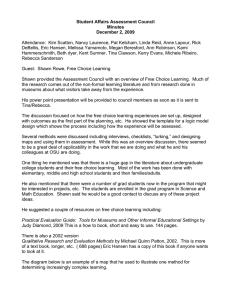
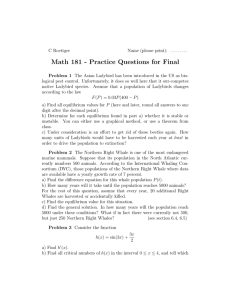
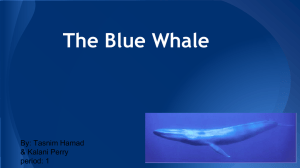

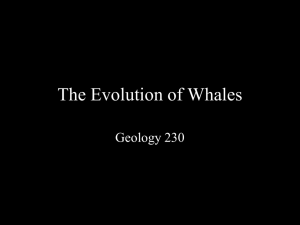
![Blue and fin whale populations [MM 2.4.1] Ecologists use the](http://s3.studylib.net/store/data/008646945_1-b8cb28bdd3491236d14c964cfafa113a-300x300.png)